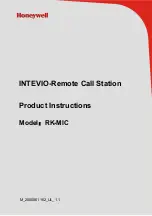
Appendix A-6
CR44/54 Glossary of terms
clutter close to own ship by reducing the nearby gain level. It can effectively
reduce the strength of the mass of random echoes received from nearby sea
clutter for up to approx. 1 to 2 nm depending on wave and sea conditions.
STC control is set to reduce the strength of these echoes such that the clutter
appears only as intermittent small dots, yet small targets can still be distin-
guished.
On short range scales, the setting of the sea clutter control should never be
advanced so high as to obliterate all clutter, since this setting could prevent
the detection of close in-target echoes - see section 3.2.2 where minimum and
maximum levels are described.
Trails
– is a feature which allows the operator to see the past history of target
movement as an after-glow or “Wake” behind the moving targets or own ship.
If the range scale is changed, the trails are cleared and new trails histories will
be redrawn to the screen.
The trails are drawn for anything that moves on the screen, including sea
gulls, sea clutter, buoys, lobster pots, and shoreline. In general it is better to
use the trails feature away from harbors and the shoreline to avoid a cluttered
display to better concentrate on trails of target vessels, etc.
True motion
– land, buoys and fixed objects remain stationary while targets
and own ship track across screen. In the True motion mode, you must be inter-
faced with an electronic compass for proper operation.
TUNE control
– is a variable control used to tune the receiver in the radar
antenna for maximum target returns on the display. If no land or ship targets
are available, the operator may tune for maximum sea clutter. The tuning
indicator will show the strength of tuning peak conditions and is tuned for
maximum deflection. Normally, tuning of the radar is performed on the 3nm
range scale or higher.















































